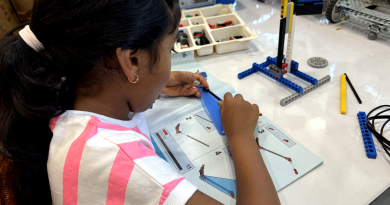Autonomous disinfecting robots join the front lines of the coronavirus battle
COVID-19, the disease caused by the novel coronavirus, has created a global lockdown, the likes of which hasn’t been seen in over a century. Responses in hot spots have varied from recommended social distancing to mandated self-isolation. While the public does its best to heed these directives, critical workers such as first responders, nurses and doctors, transit employees, grocery store employees and others remain at their jobs.
One group being relied heavily on during this time of crisis is the set of people tasked with disinfecting contaminated areas, putting them at great potential risk. To reduce human contact in these affected indoor and outdoor areas, disinfecting robots are being developed.
“Instead of manual disinfection, which requires workforce mobilization and increases exposure risk to cleaning personnel, autonomous or remote-controlled disinfection robots could lead to cost-effective, fast, and effective disinfection,” states an editorial recently published in Science Robotics.
Business Insider reported on the efforts to disinfect public areas, stating, “Across the world, disinfection teams have descended upon kindergartens, state capital buildings, markets, mosques, airports, and public roads. Teams of hazmat-suited workers are spraying low-concentration bleach-and-water mixtures from trucks, guns, drones, and robots.”
Weston Robots developed a robot for outdoor use. The sanitizing robot, jointly developed with AgileX in Dongguan, can be controlled remotely via a 4G network, enabling the cleaning crew to be physically removed from both the virus and the cleaning solution.
The New York Times published a timeline of COVID that starts on December 31, 2019. In less than four months since the first reported cases, more than 2.5 million cases have been confirmed. This pandemic hit fast and technology companies are working hard to keep pace. One in particular, Weston Robot, a developer and supplier of robotics, reacted quickly to help battle the virus. The team developed a prototype in ten days, leading the way for other robotic developers to do the same.
“Back to January, when COVID-19 was first proven to be infectious among humans, the team spent less than 10 days to come up with the first sanitizing robot prototype and to demonstrate the feasibility of using robots. Many robotics companies followed,” says Dr. Zhang Yanliang, managing director and chief scientist at Weston Robot, Singapore.
Source:www.mathworks.com




